[zrdn-recipe id=”17″]



Detox
Detoxification is part of the body’s response to environmental stressors. In order for the body to properly detox, protein is essential. Physiologically speaking, detoxification is a secondary function in terms of protein allocation. In a proper detox, there are multiple phases/steps.Â
Step 1: mobilization from fat-based storage sitesÂ
Step 2: metabolism (phase 1 and 2 enzymes in the liver)Â
Step 3: elimination via kidneys and GI Tract (phase 3)Â
Lifestyle
The first lifestyle change that occurs along with a detox is to reduce environmental stressors. This ensures the body is not working overtime when it does not need to. Ways to reduce environmental stressors include:Â
Reduce toxic exposureÂ
Reduced processed foods
Reduce proinflammatory foods
Reduce caloric intakeÂ
Reduce excess worry and stressÂ
Next, patients will begin to introduce habits into their daily lifestyle. These introductions are critical for detoxification success.Â
Quality, whole foodsÂ
Meditation, yoga, exercise, music, etc.Â
SleepÂ
Other healthy habits that reduce stress and worryÂ
Detoxification has both a physiological goal as well as a biochemical goal. Biochemically speaking, the goal is to mobilize toxins we have stored in fatty storage deposits (heavy metals, etc.) and eliminate them via the bile (from the liver) through the stool or urine (from the kidneys). Additionally, a detox will help to reduce inflammation and improve mental clarity.Â
It is important to note that the nervous, endocrine, and immune system are all vastly connected and the stimulation of one can commonly trigger responses in all.Â
By decreasing the inflammation and toxic load in the body, individuals’ phase angle may benefit. Phase angle is how health care professionals can monitor the integrity of cellular membranes. If the phase angle begins to decline, it has been linked directly to a decline in overall health. Similar to if phase angle increases, overall health is increasing. The integrity of cellular membranes is essential as cell survival depends on solid membranes. When the cellular wall is weak, it can collapse. From here, it is difficult for the body to take up the proper nutrients it needs. Additionally, with a weak cellular membrane, the cell is left with little to no protection from outside invaders.Â
InBody
We monitor a patient’s phase angle with the use of the InBody 770. This advanced machine allows us to not only track the phase angle of our patients but many other areas of their health as well, including but not limited to intracellular and extracellular water.Â
[embedyt] www.youtube.com/watch?v=WwbIsPNUYqs%5B/embedyt%5D
PHASE ANGLE IS ONE OF THE BEST WAYS TO GET AN INSIDE PERSPECTIVE OF WHAT IS ACTUALLY HAPPENING INSIDE THE PATIENT’S BODY. THERE ARE MANY PATIENTS WHO APPEAR HEALTHY BUT HAVE A LOW PHASE ANGLE. BY SEEING THIS, WE ARE ABLE TO MAKE PREVENTATIVE LIFESTYLE CHANGES. -KENNA VAUGHN, ACSM-EP, SENIOR HEALTH COACH
References:Â
Bosy-Westphal A, Danielzik S, Dörhöfer RP, Later W, Wiese S, Müller MJ. Phase angle from bioelectrical impedance analysis: population reference values by age, sex, and body mass index. JPEN J Parenter Enteral Nutr. 2006 Jul-Aug;30(4):309-16. doi: 10.1177/0148607106030004309. PMID: 16804128. Â
Klein AV, Kiat H. Detox diets for toxin elimination and weight management: a critical review of the evidence. J Hum Nutr Diet. 2015 Dec;28(6):675-86. doi: 10.1111/jhn.12286. Epub 2014 Dec 18. PMID: 25522674.Â
Additional Online Links & Resources (Available 24/7)


Â
Online Appointments or Consultations:  https://bit.ly/Book-Online-Appointment


Â
Online Physical Injury / Accident Intake Form: bit.ly/Fill-Out-Your-Online-History


Â
Online Functional Medicine Assessment: bit.ly/functionmed
Â
Disclaimer
Â
The information herein is not intended to replace a one-on-one relationship with a qualified health care professional, licensed physician, and is not medical advice. We encourage you to make your own health care decisions based on your research and partnership with a qualified health care professional. Our information scope is limited to chiropractic, musculoskeletal, physical medicines, wellness, sensitive health issues, functional medicine articles, topics, and discussions. We provide and present clinical collaboration with specialists from a wide array of disciplines. Each specialist is governed by their professional scope of practice and their jurisdiction of licensure. We use functional health & wellness protocols to treat and support care for the musculoskeletal system’s injuries or disorders. Our videos, posts, topics, subjects, and insights cover clinical matters, issues, and topics that relate and support, directly or indirectly, our clinical scope of practice.* Our office has made a reasonable attempt to provide supportive citations and has identified the relevant research study or studies supporting our posts. We provide copies of supporting research studies available to regulatory boards and the public upon request. We understand that we cover matters that require an additional explanation of how it may assist in a particular care plan or treatment protocol; therefore, to further discuss the subject matter above, please feel free to ask Dr. Alex Jimenez or contact us at 915-850-0900.  Read More…
Dr. Alex Jimenez DC, MSACP, CCST, IFMCP*, CIFM*, CTG*
email: coach@elpasofunctionalmedicine.com
phone: 915-850-0900
Licensed in Texas & New Mexico
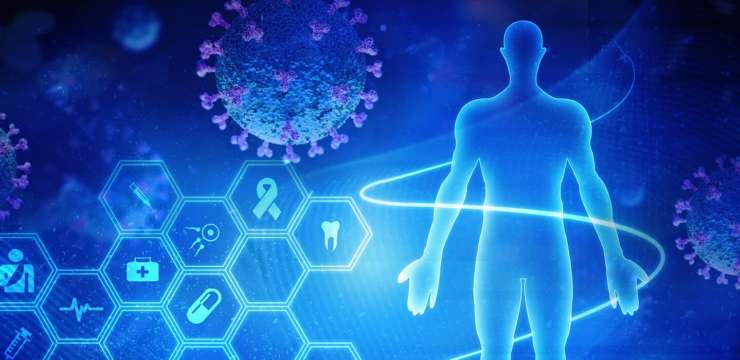
Phase Angle is a helpful tool for health practitioners to identify the cell membrane’s integrity and dysfunction. In recent years, studies show an increase in patients with Metabolic Syndrome. Aside from the other health issues that metabolic syndrome induces, it increases oxidative stress and inflammation throughout the body. Oxidative stress promotes cellular damage.Â
Metabolic Syndrome
Metabolic Syndrome is a condition in which multiple health conditions occur together. Metabolic Syndrome increases an individual’s risk for heart disease, stroke, and type 2 diabetes. The conditions that make up metabolic syndrome include:Â
Increased blood pressure (>130/85mmHg)
High fasting blood glucose (>110mg/dL)
Excess body weight (men >40in, women >35in)
Low HDL (men <40mg/dL, women <50mg/dL)
Hypertriglyceridemia (>150mg/dL)Â
Although many individuals experience all of the conditions listed above, you only need to have three out of the five in order to be diagnosed with metabolic syndrome. Metabolic syndrome is often correlated with age, inflammation, obesity, and diabetes. The risk of developing metabolic syndrome increases the older you get and your rate of physical activity. If you become less active, your risk of developing metabolic syndrome will rise.Â
[embedyt] www.youtube.com/watch?v=deH1uzXA1ik%5B/embedyt%5DÂ
Phase AngleÂ
Phase angle is how health care professionals can monitor the integrity of cellular membranes. If the phase angle begins to decline, it has been linked directly to a decline in overall health. Similar to if phase angle increases, overall health is increasing. The integrity of cellular membranes is essential as cell survival depends on solid membranes. When the cellular wall is weak, it can collapse. From here, it is difficult for the body to take up the proper nutrients it needs. Additionally, with a weak cellular membrane, the cell is left with little to no protection from outside invaders.Â
We monitor a patient’s phase angle with the use of the InBody 770. This advanced machine allows us to not only track the phase angle of our patients but many other areas of their health as well, including but not limited to intracellular and extracellular water.Â
[embedyt] www.youtube.com/watch?v=WwbIsPNUYqs%5B/embedyt%5DÂ
Increasing Phase Angle & Decreasing Metabolic Syndrome
There are simple steps individuals can take every day to begin to improve their phase angle as well as decrease their risk of developing metabolic syndrome. These lifestyle changes include:Â
Exercising for a minimum of 30 minutes a day (as simple as walking)Â
Adding in a vegetable and fruit to every meal or snackÂ
Getting adequate protein and whole grains
Limiting saturated fat and salt intakeÂ
Not smokingÂ
Maintaining a healthy weightÂ
Adequate sleep for proper cellular healingÂ
IN THE RECENT YEAR, THERE HAVE BEEN MORE PATIENTS WHO ARE DIAGNOSED WITH METABOLIC SYNDROME. WHEN CAUGHT EARLY, THERE ARE MULTIPLE WAYS TO COMBAT THIS DIAGNOSIS HOLISTICALLY AND NATURALLY. WITH THE ABILITY TO CREATE PERSONALIZED TREATMENT PLANS INVOLVING EXERCISE, DIET, AND NATURAL SUPPLEMENTS, WE SEE AN INCREASE IN PATIENT’S OVERALL PHASE ANGLE. -KENNA VAUGHN, ACSM-EP, SENIOR HEALTH COACH
References:Â
de Luis DA, Aller R, Romero E, Dueñas A, Perez Castrillon JL. Relation of phase angle tertiles with blood adipocytokines levels, insulin resistance and cardiovascular risk factors in obese women patients. Eur Rev Med Pharmacol Sci. 2010 Jun;14(6):521-6. PMID: 20712259.Â
Huang PL. A comprehensive definition for metabolic syndrome. Dis Model Mech. 2009 May-Jun;2(5-6):231-7. doi: 10.1242/dmm.001180. PMID: 19407331; PMCID: PMC2675814. Â
Additional Online Links & Resources (Available 24/7)


Â
Online Appointments or Consultations:  https://bit.ly/Book-Online-Appointment


Â
Online Physical Injury / Accident Intake Form: bit.ly/Fill-Out-Your-Online-History


Â
Online Functional Medicine Assessment: bit.ly/functionmed
Â
Disclaimer
Â
The information herein is not intended to replace a one-on-one relationship with a qualified health care professional, licensed physician, and is not medical advice. We encourage you to make your own health care decisions based on your research and partnership with a qualified health care professional. Our information scope is limited to chiropractic, musculoskeletal, physical medicines, wellness, sensitive health issues, functional medicine articles, topics, and discussions. We provide and present clinical collaboration with specialists from a wide array of disciplines. Each specialist is governed by their professional scope of practice and their jurisdiction of licensure. We use functional health & wellness protocols to treat and support care for the musculoskeletal system’s injuries or disorders. Our videos, posts, topics, subjects, and insights cover clinical matters, issues, and topics that relate and support, directly or indirectly, our clinical scope of practice.* Our office has made a reasonable attempt to provide supportive citations and has identified the relevant research study or studies supporting our posts. We provide copies of supporting research studies available to regulatory boards and the public upon request. We understand that we cover matters that require an additional explanation of how it may assist in a particular care plan or treatment protocol; therefore, to further discuss the subject matter above, please feel free to ask Dr. Alex Jimenez or contact us at 915-850-0900.  Read More…
Dr. Alex Jimenez DC, MSACP, CCST, IFMCP*, CIFM*, CTG*
email: coach@elpasofunctionalmedicine.com
phone: 915-850-0900
Licensed in Texas & New Mexico

Melatonin works as a link between circadian rhythms of different target tissues distributed on our body. The pineal gland primarily secretes melatonin, but other tissues…

Anthropometric Assessment Anthropometric measurement plays a principal role in the patient’s health assessment. Anthropometric measures are an essential part of our clinical findings; body composition…
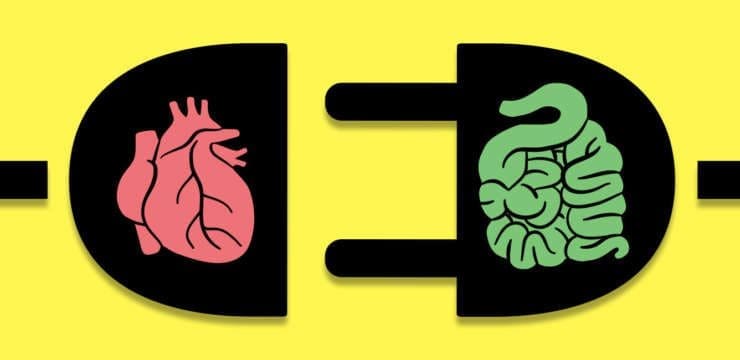
The world of medicine is continually advancing and growing. Research is being published every day on new ways to measure health. In recent years, the importance of Phase Angle has come to light.
Phase angleÂ
When reviewing InBody scans, there is one number we pay exceptional attention to. This number is the phase angle. The phase angle can be summed up as the quality and quantity of the health of a cell. Essentially, a GPA of an individual’s overall health. Phase angles measure oxidative stress, the aging stress on a cell, and the nutritional status. If cell membrane integrity begins to decline, so will the phase angle reported and vice-versa. Keeping track of this number will allow practitioners to determine if the patient responds to the therapeutic exercises, treatments, and lifestyle changes the clinic is implementing. Â
It is important to remember that when we exercise, we damage the cells and muscles. The act of building muscle is breaking down the muscle we have and recovering. This is why rest and nutrition are key.Â
Body Impedance Analysis (BIA)Â
At our clinic, we use the InBody 770. This technology provides beneficial information like muscle mass, fat mass, segmental fat, intracellular water, extracellular water, phase angle, visceral fat, and more. To learn more about BIA and phase angle, a video is provided below.Â
[embedyt] www.youtube.com/watch?v=MUCalp2SkNE%5B/embedyt%5D
TMAOÂ
Adding on to new research coming to light. It has been shown that TMAO is another significant factor to consider when looking at an individual’s overall health. TMAO is trimethylamine N-Oxide. Every individual has a unique microbiome comprised of healthy bacteria. However, microbiomes are full of unhealthy bacteria as well. As we eat, we consume TMA from red meat, egg yolk, and full-fat dairy products. TMA is later converted to TMAO in the liver. High levels can reduce the removal of bad cholesterol from the arteries and increase your heart attack and stroke risk. To remove TMAO, it is recommended that individuals eat a Mediterranean diet and limit red meat.Â
[embedyt] www.youtube.com/watch?v=-pTXvrPTmeI%5B/embedyt%5D
At the clinic, we have the capability to test for TMAO using Cleveland Heart Lab. Below is a sample report from Cleveland Heart Lab. Under the metabolic section, you can see the TMAO levels.Â
RESEARCH IS CONSTANTLY UNCOVERING NEW WAYS TO HELP PATIENTS PROTECT THEMSELVES FROM INFLAMMATION. BY PERFORMING THESE TESTS, WE CAN SEE IF AN INDIVIDUAL IS MORE SUSCEPTIBLE TO AN UNDERLYING CONDITION AND HAVE THEIR LEVELS TESTED APPROPRIATELY. THIS ALLOWS US TO CREATE A PERSONALIZED TREATMENT PLAN FOCUSED ON BRINGING THEM BACK TO OPTIMAL HEALTH. -KENNA VAUGHN, SENIOR HEALTH COACHÂ
References
Publishing, Harvard Health. “Red Meat, TMAO, and Your Heart.” Harvard Health, www.health.harvard.edu/staying-healthy/red-meat-tmao-and-your-heart. Â
Additional Online Links & Resources (Available 24/7)


Online Appointments or Consultations:  https://bit.ly/Book-Online-Appointment


Online Physical Injury / Accident Intake Form: https://bit.ly/Fill-Out-Your-Online-History


Online Functional Medicine Assessment:Â https://bit.ly/functionmed
Disclaimer
The information herein is not intended to replace a one-on-one relationship with a qualified health care professional, licensed physician, and is not medical advice. We encourage you to make your own health care decisions based on your research and partnership with a qualified health care professional. Our information scope is limited to chiropractic, musculoskeletal, physical medicines, wellness, sensitive health issues, functional medicine articles, topics, and discussions. We provide and present clinical collaboration with specialists from a wide array of disciplines. Each specialist is governed by their professional scope of practice and their jurisdiction of licensure. We use functional health & wellness protocols to treat and support care for the musculoskeletal system’s injuries or disorders. Our videos, posts, topics, subjects, and insights cover clinical matters, issues, and topics that relate and support, directly or indirectly, our clinical scope of practice.* Our office has made a reasonable attempt to provide supportive citations and has identified the relevant research study or studies supporting our posts. We provide copies of supporting research studies available to regulatory boards and the public upon request. We understand that we cover matters that require an additional explanation of how it may assist in a particular care plan or treatment protocol; therefore, to further discuss the subject matter above, please feel free to ask Dr. Alex Jimenez or contact us at 915-850-0900.  Read More…
Dr. Alex Jimenez DC, MSACP, CCST, IFMCP*, CIFM*, CTG*
email: coach@elpasofunctionalmedicine.com
phone: 915-850-0900
Licensed in Texas & New Mexico

All disease starts in the gut, but how? Intestinal permeability is a great contributor to metabolic and chronic conditions, as it allows bacterial translocation. Furthermore,…

The high prevalence of chronic conditions such as hyperlipidemia, hypertension, type 2 diabetes, and obesity have a close link to our society’s poor lifestyle habits.…

Inflammation Fighting Smoothie
Dark leafy greens as well as certain fruits are a great way to help the body naturally fight off inflammation. We’ve put together a simple smoothie that can be consumed every morning to fuel your body and help reduce inflammation.
¾ cup orange juice
½ cup ice
½ spinach
1 cup strawberries, sliced
½ cup blueberries
2 tbsp flax seed
Additionally, it is great to add powder pre and probiotics to smoothies. This ensures we are feeding the microbiome the healthy bacteria it needs to flourish.
For additional protein, add in 1 scoop protein powder or 5oz of greek yogurt

The overweight and obesity epidemic has taken over the world, promoting the prevalence of chronic diseases. The common denominator of this problem is our sedentary…

The nucleotide-binding domain and leucine-rich repeat related (NLR) family, pyrin domain containing 3 (NLRP3) is a multimeric protein that recognizes different PAMPs and DAMPs. Furthermore,…

Inflammation is a necessary response, and it can initiate host defense response and repair damaged tissue. However, an uncontrolled inflammatory signal can cause prolonged inflammatory…

Our main interaction with food, pathogens, and inflammatory signals is made through our intestinal barrier. Indeed, our gut epithelium is where the absorption, digestion, transportation…
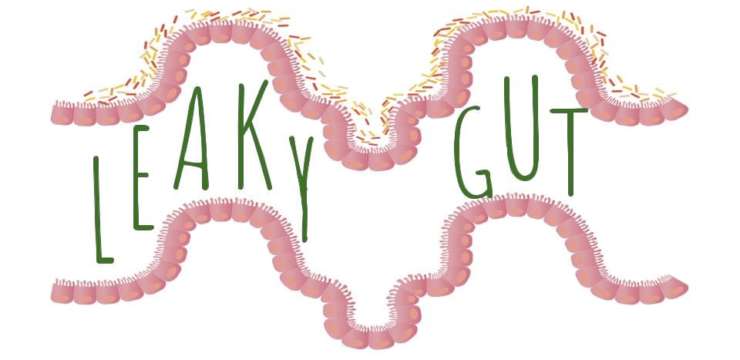
The link between inflammation and many diseases was made less than 15 years ago. With that being said, there is still so much we are constantly finding out about the connection. Inflammation and disease can be thought of as a circle, the relationship is complex and goes both ways. Inflammation is not always felt by the patient. Majority of inflammation happens in the gut and digestive tract. This leads to something we call “Leaky Gut†or Intestinal Permeability.Â
Contributing factors to systemic inflammation include:
SmokingÂ
Environmental pollutantsÂ
Overweight
Sedentary lifestyleÂ
Stress
Diet
It is important to keep in mind that not all inflammation is bad. In fact, we need inflammation. Inflammation is a natural and normal response within the body to help repair damaged areas. However, when the inflammation gets excessive, we begin to see problems arise. The first steps we take is to eliminate and reduce the contributing factors of systemic inflammation. Smoking includes second hand smoke as well environmental pollutants. These create excessive inflammation in the body and we are unaware of what we are truly breathing in. A sedentary lifestyle and being overweight typically go hand in hand. Adipose tissue or fat cells produce inflammatory chemicals at a faster rate than lean muscle mass. When we live a sedentary lifestyle and begin to carry around added weight, we are adding fuel to the inflammatory fire. Lastly, stress can add unnecessary inflammation to the body by causing cortisol to release into the adrenal pathways. Â
Nutrition
Anti-Inflammatory diets are constantly circling around. There have been studies with benefits linking to diets that include healthy fats, low glycemic, wheat-free, Mediterranean, ph-balanced, and antioxidants. One thing that all healthcare providers seem to have in common is agreeing that nutrition is linked to inflammation and pro-inflammatory foods include trans fats, SFA, ARA, and high glycemic loads.Â
In order for a patient to be on a true anti-inflammatory diet that helps recover their gut and reduce inflammation, lab work is needed. The reason is that one food that is anti-inflammatory in one individual, might be causing major irritation and inflammation in another.Â
LabsÂ
To start off, we run a Food Sensitivity Test from Vibrant America. This tests to make sure they do not have any specific IgG reactions to foods consumed, like wheat, vegetables, fruits, and more.

Migraines and Fibromyalgia have one thing in common, they are both due to mitochondrial dysfunction. More often than not we see those with mitochondrial dysfunction suffering from more than one type of discomfort. The first thing we do is take a detailed history, to truly understand the patient’s history, environment, previous treatment plans, and symptoms.Â
Mitochondrial function is a necessity for the body to perform properly. There have been studies that show that magnesium and malic acid is needed for mitochondrial function. In fact, giving magnesium malate 2 tabs, three times a day showed decreased pain in fibromyalgia patients. Magnesium also helps as a laxative and is often helpful in cleansing the gut and beginning to restore gut health. Another step we take to restore gut health is to perform a food sensitivity test to make sure they do not have any specific IgG reactions to foods consumed in their daily diet. We use the Food Sensitivity Test from Vibrant America. Genes
There is research supporting that individuals who have an MTHFR gene mutation are more susceptible to instability in the central neurovascular system. Those who have a MTHFR gene mutation can not convert folate to methylfolate. This is linked to migraines, mood problems, and increased susceptibility for fibromyalgia. For more information regarding MTHFR, please refer to GeneCards: MTHFR.
Nutrition / SupplementsÂ
After analyzing lab work, and when implemented correctly, there are many foods and supplements that can help patients with symptoms associated with mitochondrial dysfunction.Â
Some foods to eat include:Â
almonds and other nuts and seeds
broccoli
beans
tofu
oatmeal
dark leafy greens
Avocado
The supplements we use are from Biotics Research and include:
Bio-Multi Plus
ProMulti Plus
Bio D MulsionÂ
B12-2000
Optimal EFA caps
A.D.P
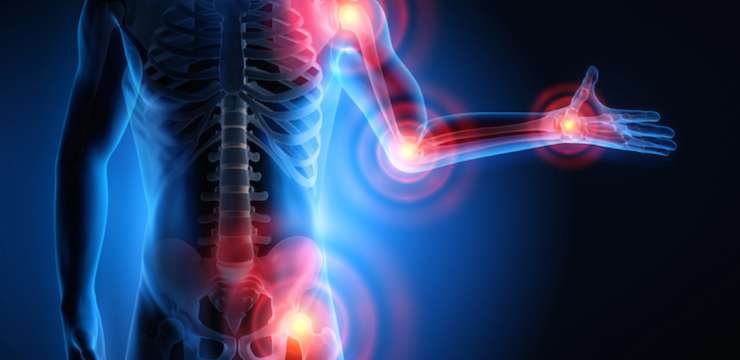
Inflammation is the human body’s natural response to protect itself against injury, infection, and illness. Trauma, exposure to foods (poor diet), microbes, and/or toxins, can…
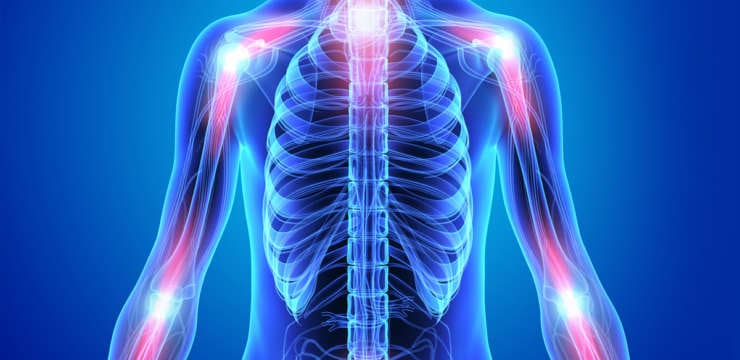
Inflammation is the human body’s natural response to protect itself against injury, infection, and illness. Trauma, exposure to foods (poor diet), microbes, and/or toxins, can…